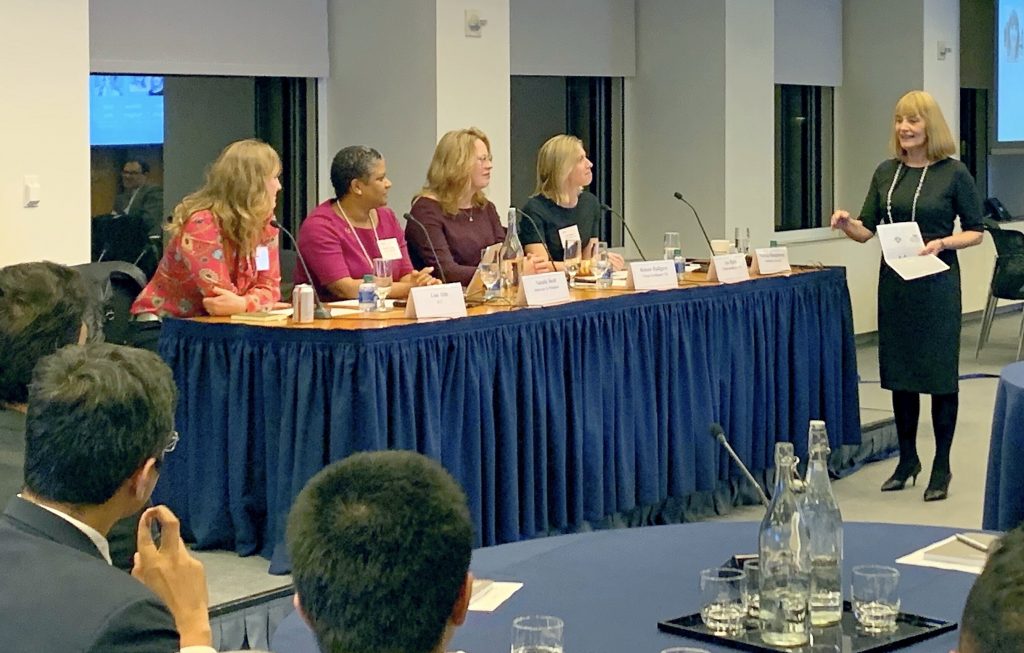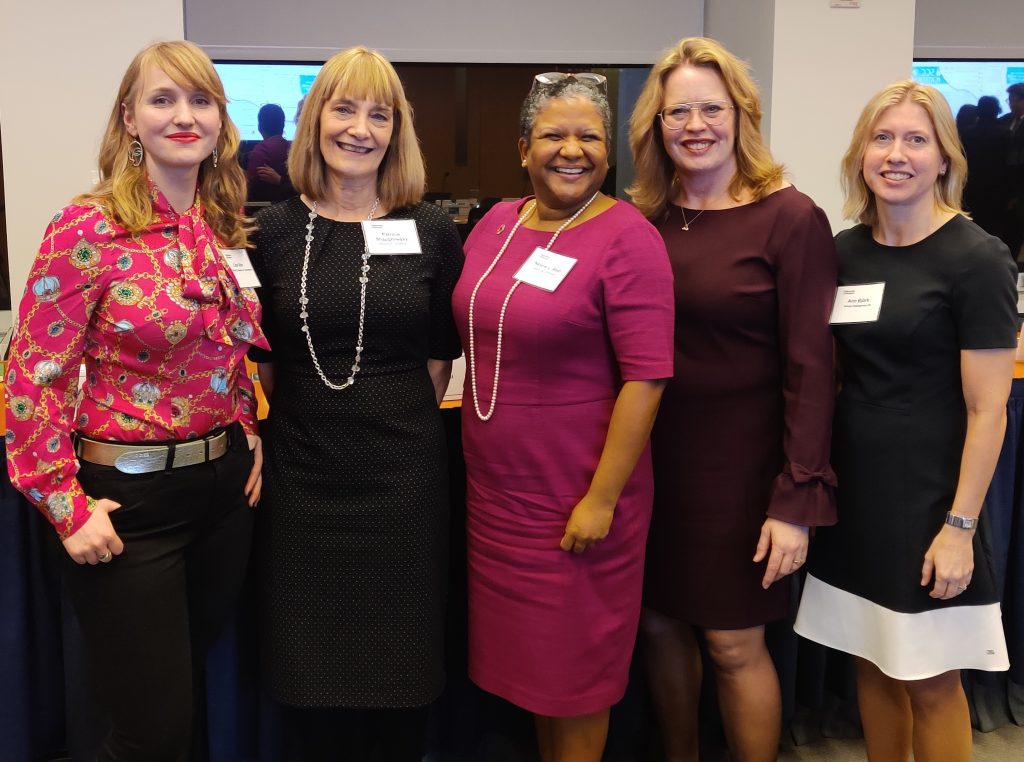Yesterday, we participated in the SCC World Tour seminar on Automation and AI in Arbitration, with a special focus on the state of play and ethical considerations in the US and Europe. The seminar was co-hosted by the SCC and Debevoise & Plimpton and speakers included Natalie L. Reid, litigation partner in the Debevoise & Plimpton’s International Disputes Group, Helena Hallgarn and Ann Björk, founders Virtual Intelligence VQ, Lise Alm, head of business development, SCC, and Professor Patricia Shaughnessy of Stockholm University.

Natalie Reid started off the seminar with the U.S. perspectives on the hype and the forefront of legal automation and how far automation in arbitration has come. There are headlines warning us for the “robot lawyer invasion”, “lawyers becoming extinct in the age of automation “ and “AI putting junior lawyers’ job at risk”, but the reality is not quite there yet. Natalie Reid explained how the key drivers in U.S. legal practice are (i) cost pressures, (ii) strategic imperative and (iii) reduction in human error (but possible machine error), which are somewhat different than in U.S. litigation. She discussed the recent developments with online dispute resolutions and showcased a case study and asked if it could scale. Moving on to the main challenges and possible upcoming trends, Natalie Reid pinpointed these as (i) case analysis and forecasting, (ii) increased pressure towards electronic disclosure, (iii) assistance with awards, (iv) resistance to using machine learning, (v) effective to reduce information imbalance between incumbents and new entrants and (vi) delegation of critical reasoning functions to machine.

We then provided a general overview of the developments of the legal market and the current legaltech hype from a European perspective. The legal services market has increased significantly the past years and only in USA it was estimated to be worth USD 437bn in 2017 (that is equivalent to 2% of US GDP) and in the UK to £33bn. The interest for investments and legaltech innovations is therefore understandable, since investors and new providers realize that if they can take a fraction of this business, they can build their own unicorn.
But how far has innovation on the legal market actually come? In a recent research project at the Stockholm School of Economics by Frida Pemer on Digitalization of Expertise, it has been explored how professional service firms respond to digitalization and the potential threat of disruption. The result of this project, as well as of a survey conducted by the European Legal Tech Association, shows that so far, focus for legal innovation has been on efficiency and cost-squeezing though, not on innovation as a game changer to provide new disruptive kinds of legal services. To really change the industry, focus must shift to digitalization that transforms the business as such and not on individual technologies that support the business to be managed the same way, only faster. This means that the development ought to move form legaltech as a cost-squeezer and efficiency tool and also from the more advanced legal tech solutions replacing legal tasks, to a completely new delivery model of legal services.
In the area of legal services, the traditional delivery model could be described as a relationship between the law firm lawyer and the client, with a focus on the lawyer as the trusted adviser and expert with reactive advice and all based on the billable hour.
The new delivery model on the other hand focuses on efficiency, price predictions, client service, technology and proactive advice. In this new market for legal services, law firms are squeezed by different Alternative Service Providers (ASPs) taking their share of the market. The ASPs consists of (i) the Big Four auditing firms, (ii) Legal Process Oursourcing companies such as Integreon, (iii) contracting and staffing companies such as Axiom and (iv) Managed Services providers such as Unitedlex. This means the clients will be able to choose legal services by a variety of legal service providers to better support their different needs. The main reason for this change to happen is that General Counsels realize that their needs are not taken care of by the traditional law firm.
We can summarize two important drivers for this change in that (i) General Counsels are in the need to implement tech tools to handle their legal matters more efficient but law firms do not think of tech as part of their service delivery, and (ii) many law firm lawyers provide advice without an understanding of the business problems and therefore look at law separate from the business. Instead they should start with the business objective and thereafter find a legal solution that would fit into that objective. Buyers of legal service will focus less on lawyers and more on business problems, i.e. clients do not want lawyers per se. Clients only want their legal issues managed, no matter if it is done by an online tool, a contracting company using efficient tech tools or a law firm lawyer. This shift has started to happen but is still just in the beginning.
Already in 2008, Professor Richard Susskind predicted in his book The End of Lawyers? that “Traditional lawyers will in large be replaced by advanced systems, or by less costly workers, supported by technology or standard processes or by lay people armed with on-line self-help tools.” Now, he has published a new book focusing on online courts and the challenge with costly proceedings and access to justice. To quote Susskind “Even in the world’s most advanced jurisdictions, most civil disputes cost too much, take too long, the processes are antiquated, and the whole business is unintelligible to non-lawyers.” So, he therefore argues that the transformation can only be achieved through the use of technology and that in a digitalised society it makes sense for disputes as well to be conducted online. He suggests two lines of services can be provided through online courts: (i) online judging and (ii) extended courts. Online judging involves the determination of cases by human judges but not in traditional courtrooms, but via online platforms. This is suitable for low value disputes like civil and family law cases. With the extended courts, Susskind means that technology can enable courts to deliver more than just judicial decisions. Like for example providing tools that can guide court users in legal issues and all options available to them or offer new kinds of non-judicial settlement like early neutral evaluation.
Lise Alm then continued with a more detailed focus on digitalisation in arbitration and with an introduction of the SCC Platform, which is an excellent example of this new developments and how digitalization of litigation is already happening. She then presented a list of trends (a “buzzword bingo” as she put it), describing for each one of (i) automated settlement tools, (ii) blockchain arbitration, (iii) AI judges, (iv) crowd sourced arbitration and (iv) fully automated institutions, where the extreme of that trend could take us and examples of the trend that are actually happening today.
Together with moderator Patricia Shaughnessy, Lise Alm and the rest of the planed also addressed the ethical considerations of digitalisation and the automation of the legal industry and dispute resolution. Machine learning usually provides a better result, but we also have to be aware of how we select the training data since built in bias in the training data reproduces bias in the result. How much error/bias do we accept in machines, vs. how much error/bias do we accept in humans? On the other hand, it could be argued that we have an ethical responsibility to leverage AI in the practice of law. If AI-powered legal tech can support lawyers to do faster, more thorough and more cost-efficient legal work, do we have a responsibility to do so? This is also an issue of access to justice. Are we obliged to use automation if it provides faster access to justice? When do we pass the point when faster but maybe less transparent and/or secure technical solutions are better than slower human solutions? Technology can be the playing field in relation to access to justice and simplified proceedings, but it risks also doing the opposite, create a superior class of firms and players that can afford state of the art technology and “out-tech” the counter party. Is it more responsible for us in the profession to push development faster even when it’s not fully tested to ensure we don’t get disrupted by less serious alternatives, or should we hold on and make sure to always uphold a high and tested standard even if we risk being outrun?

(On a side note, it was a happy happenstance that the panel was an all-woman one, showing not only the technological advances but also the rise of women in legaltech in practice.)

